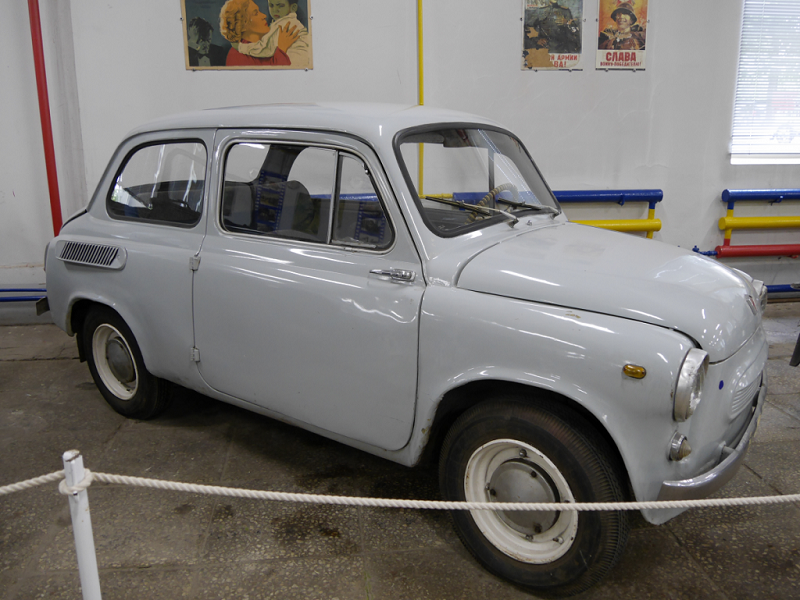ZAZ 965A Zaporozhets. Mosfilm studio museum (Moscow). Took part in the filming of the movie “The Vanished Empire”.
ZAZ Zaporozhets was a series of rear-wheel-drive superminis (city cars in their first generation) designed and built from 1958 at the ZAZ factory in Soviet Ukraine. Different models of the Zaporozhets, all of which had an air-cooled engine in the rear, were produced until 1994. Since the late 1980s, the final series, 968M, was replaced by the cardinally different ZAZ-1102 Tavria hatchback, which featured a front-wheel drive and a more powerful water-cooled engine.
The name Zaporozhets translates into a Cossack of the Zaporizhian Sich or а man from Zaporizhzhia or the Zaporizhzhia Oblast.
Zaporozhets is still well known in many former Soviet states. Like the Volkswagen Beetle or East Germany’s Trabant, the Zaporozhets was destined to become a “people’s car” of the Soviet Union, and as such it was the most affordable vehicle of its era.
At the same time, it was rather sturdy and known for its excellent performance on poor roads. Another important advantage of the Zaporozhets was its ease of repair.
Numerous special versions of the Zaporozhets were produced, equipped with additional sets of controls that allowed operating the car with a limited set of limbs, and were given for free or with considerable discounts to disabled people, especially war veterans – similar to SMZ-series microcars.
ZAZ-965A
The 965A was an improvement on the 965 and was produced from November 1962 to May 1969. In total, 322,106 units of the 965 were produced. It was powered by a MeMZ 965 rear-mounted, air-cooled OHV 887 cc (54.1 cu in) V4 engine, partially of aluminium design, producing 27 PS (20 kW).
From November 1966 some cars were fitted with the slightly more powerful 30 PS (22 kW) MeMZ-965A engine. The 965’s modest engine output has given ground to an urban joke that it was used as a starter motor in Soviet tanks.
As Soviet drivers were expected to do much of the servicing themselves, and auto workshops were in short supply anyway, the engine’s 90° V4 layout proved more practical, especially in harsh winter conditions. The higher centre of gravity of the engine also provided superior traction on steep slopes, though this advantage, which was also continued in later models, came at the expense of the car’s infamous lack of cornering stability.
The 965A also had its versions for the disabled (ZAZ-965B, AB, AR), as well as a more luxurious export variant ZAZ-965AE Yalta.
Despite low prestige of those cars, they have shown an unbeaten accessibility and popularity among the Soviets, becoming the “car for pensioners and intellectuals”. They were the cheapest Soviet-made cars. Quite a large number of them were produced in variants for disabled people, with modified steering.
Between November 1966 and May 1969 the 965A and its successor, the ZAZ966, were produced concurrently.
When production of the 965 ended, 322,116 had been built.












